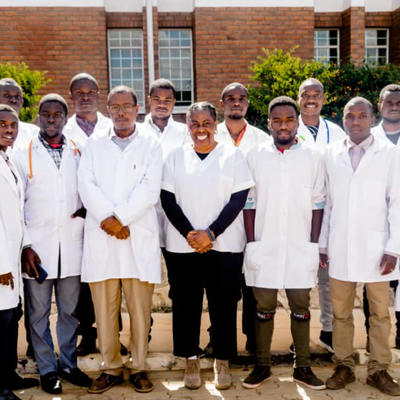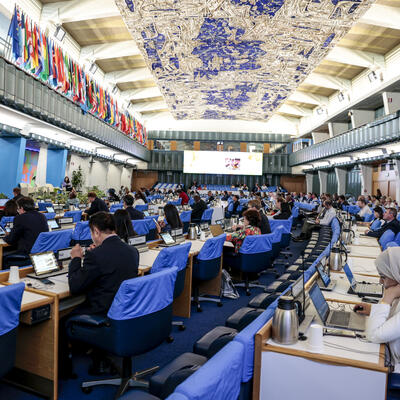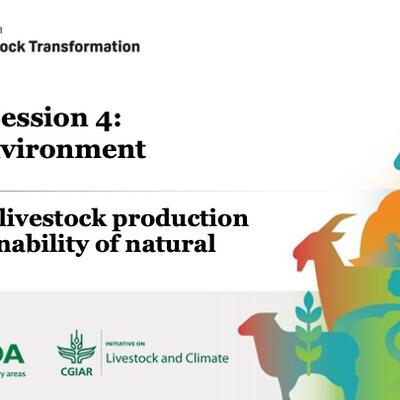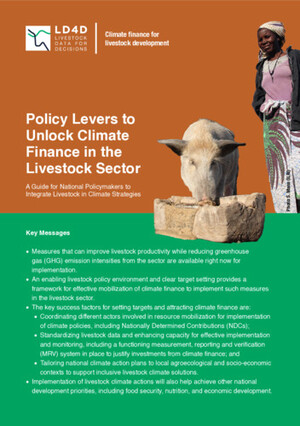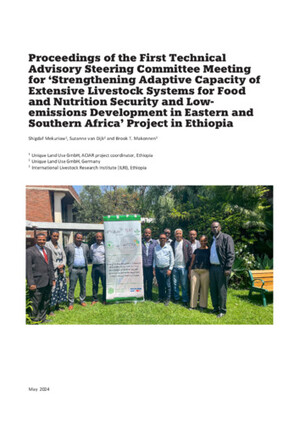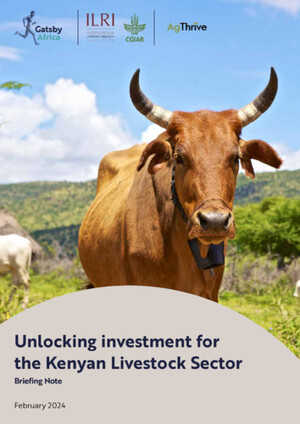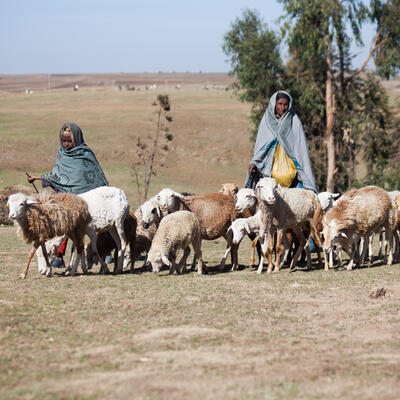
“A virus is a piece of bad news wrapped up in protein”—Sir Peter Medawar
Two of ILRI’s senior scientists discuss what’s next in vaccine development and public health measures
Vish Nene, co-leader animal and human health program, and Dieter Schillinger, deputy director general of research and development–biosciences, gave presentations on the status of vaccine development and the latest research on mask-wearing for dealing with COVID-19 at ILRI’s latest Town Hall meeting on 29 January, 2021.
Nene, who had last spoken at an ILRI Town Hall in May, 2020, when he had given a mixed prognosis about the possibility of developing a timely vaccine, this time sounded considerably more upbeat: ‘I actually want to start on a positive note: We do have vaccines. The fact that we have three vaccines that have been developed and deployed in less than one year is a phenomenal achievement.’ He was quick to note, however, that manufacturing the vaccines at scale ‘is not as trivial a task as one would anticipate’.
Already, Nene said, there have been some slippages in the vaccine timeframes originally anticipated for Europe. More worrisome, he said, is the challenge of how to get vaccines to low- and middle-income countries. The three vaccine producers between them currently project being able to make 3.3 billion doses of the vaccine by the end of 2021—not nearly enough to vaccinate enough of the world’s population to achieve global herd immunity. This has given rise to vaccine nationalism, where rich countries have made bilateral deals with the manufacturers to secure vaccines for their own populations.

Sir Peter Medawar Public Domain
To alleviate these problems, several global organizations, coordinated by Gavi (the Vaccine Alliance), the Coalition for Epidemic Preparedness Innovations (CEPI) and the World Health Organization (WHO), came together to create COVAX, whose aim is to provide 1.8 billion vaccines for some 92 low- and middle-income countries. The goal, said Nene, is to provide enough vaccines to reach 20% of the population in these countries—enough to treat the acute phase of the pandemic. Of these, some 600 million doses would be provided to sub-Saharan Africa. In addition, the African Union has ordered some 270 million additional doses of the vaccine. It’s not clear, however, whether the companies are going to be able to meet these dates in terms of production and delivery—and if they do whether the governments will have the capacity to efficiently deliver the vaccine to their people.
One growing concern has to do with the mutations that have emerged recently in several countries, including South Africa, the UK, and Brazil. Viruses mutate constantly, but these new strains alter the virus’s spike protein, which appears to increase their infectiousness. It doesn’t appear that these variants are any more lethal than the original COVID-19, however, and while there is some concern that the variants may be less vulnerable to the vaccine, it’s still far too soon to say that the current vaccines will not work. On the contrary: ‘The vaccine companies have actually already started working on the variants and looking at how to put the variants into the next generation vaccines’.
Dieter Schillinger spoke on the latest research regarding face masks. As much progress has been made on vaccines, for the foreseeable future non-pharmaceutical interventions like masks, handwashing and social distancing will continue to be essential, he said. Many of the people who followed the inauguration of Joe Biden came away deeply impressed by the passionate verse of the young poet Amanda Gorman, but not as many may have noticed that she was wearing two face masks. This was not some poetic affectation: Dr. Fauci, science advisor to the US government, says that double masking makes sense and is likely more effective.
Schillinger went through the comparative benefits of the four most common types of masks. Cloth masks, perhaps the most common type, provide some source control (that is, they are good at preventing infected people from infecting others) but are ineffective at filtering inhaled air (that is, at preventing the mask wearer from becoming infected from others). Surgical or procedural masks—the light blue type—provide better source control but are not very effective with inhaled air. Respirator types with exhaust valves are the opposite: bad at source control but good at filtering inhaled air. Best of all are respirator types without exhaust valves, also known as the N95 or FFP2: These are good at both source control and inhaled air. At 2-3 USD each, these may be unaffordable for many, although many governments are working to solve this.
It's likely, said Schillinger, that masks will continue to be important for a long time to come. ‘Even if you are vaccinated, it may be wise to continue to wear a mask because nobody knows if and when you might become a carrier again.’ He closed by citing the famous British biologist Sir Peter Medawar, who in his Nobel Prize address in 1960 said, ‘No virus is known to do good. It has been well said that a virus is a piece of bad news wrapped up in protein.’
Here is a link to the video.








